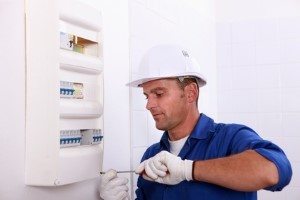Why a Circuit Breaker Trips

A circuit breaker can trip for one of two reasons, a short circuit or an overloaded circuit. A short circuit being the simplest to explain and the hardest to repair and an overloaded circuit being relatively easy to explain and easier to fix.
A breaker is designed to regulate the amount of amperage a wire can safely carry. This is why most 110 volt circuits in your home are wired with 12 Gage wire and placed on a 20 amp breaker. Quite possibly your home could be wired on 14 gage wire and a 15 amp breaker. One could place a 15 amp breaker on the 12 gage wire a swell but you can NEVER place a 20 amp breaker on 14 gage wire.
See, wire has a rated ampacity that it can carry and 12/20 and 14,15 are the maximum for each circuit. This is what is violated when a circuit breaker trips.
In a short circuit the hot wire is broken or possibly just has the insulation worn enough to make contact with a ground. When this happens this direct short causes the amperage to increase coming through the breaker and when the amperage is higher than the rating on the breaker the breaker trips. When you try and reset the breaker it will trip right back off. Repairing this situation requires someone with electrical knowledge or hire an electrician. Electricity is dangerous so don't play around with it. It takes less than one amp to kill someone.
The other reason a circuit breaker trips is because of overloading the circuit. As I have stated a circuit has a breaker protecting the wire it is served by. If this is 12/20 then 20 amps is the maximum for the circuit. So, you plug in a hair dyer that is rated at 1500 watts and decide you better let the 1500 watt curling iron heat up. Now, a simple calculation watts divided by voltage gives amps. So, 3000/120=25amps. Your circuit is overloaded and will trip. Plug only one item in at a time or find another circuit for the curling iron!
Author: Stanley Roberts






